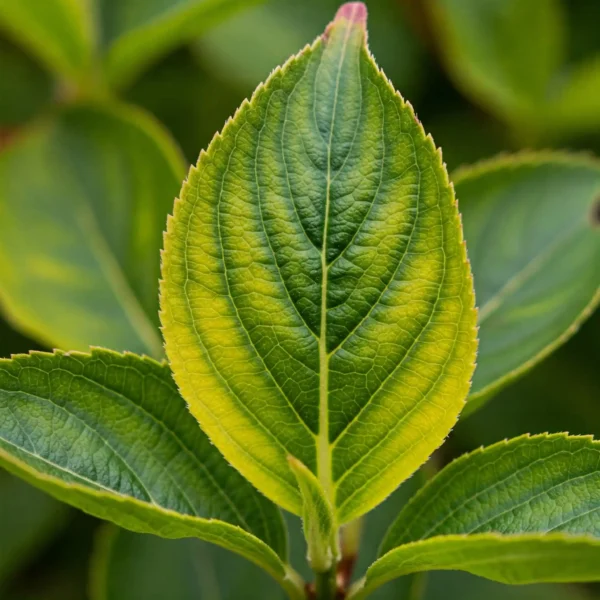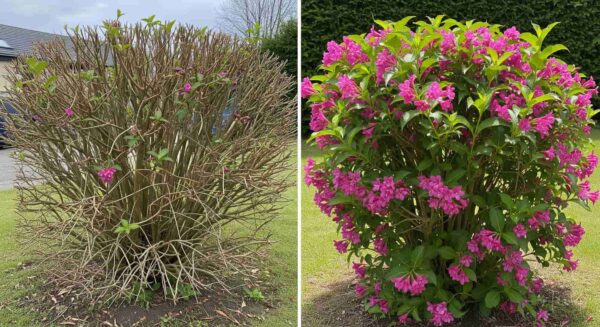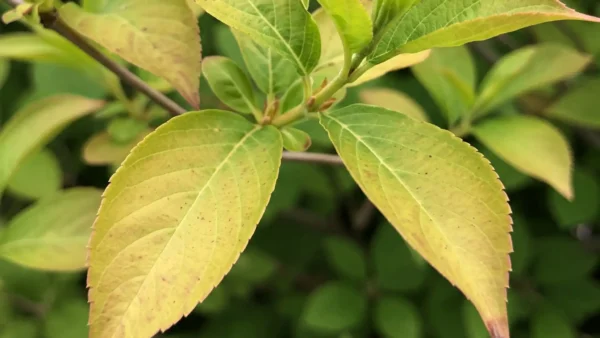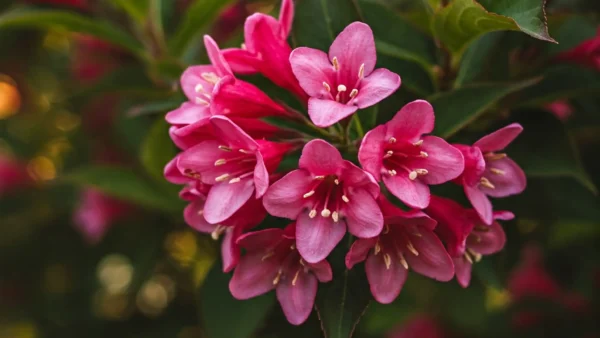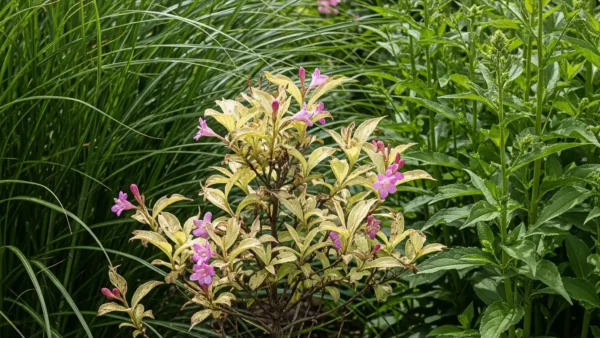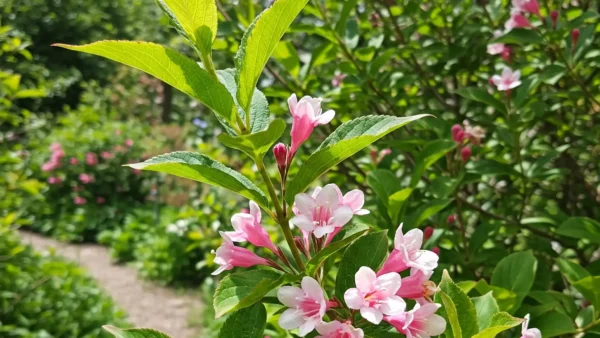Pruning Your Weigela at the Wrong Time Costs You Blooms!
Imagine this: All year long, or maybe even longer, you have been eagerly waiting for your Weigela to burst into that magnificent display of trumpet-shaped, vibrant flowers. You recall last year’s colorful display, or maybe the alluring image on the nursery tag. The birds are singing and other plants are blooming as spring arrives, but what about your Weigela? A sea of green surrounds it. Yes, it appears healthy, but it is completely lacking in the promised blossoms. If this seems awfully similar, I can assure you that the heartbreaking cause of this floral no-show could be a straightforward (and really common!) trimming error.
Isn’t it extremely frustrating? Perhaps you’re wondering whether you’ve failed the plant in some way, or you feel like it has let you down. Frequently, it’s only a misinterpretation of when and how this lovely shrub gets ready for its flower show.
The purpose of this post is to shed light on why pruning your Weigela during specific seasons of the year is a surefire way to end up in “No Flower City.” More significantly, it will provide you with the information you need to guarantee an amazing bloom show each and every year. The main culprit for a bloomless spring is trimming after your Weigela has set its flower buds on old wood, which is particularly typical during those eager fall garden clean-ups. We’ll go into great detail about this.
The Secret of the Weigela: Comprehending “Old Wood”
Weigela (and many other popular spring-flowering shrubs) have a basic trait that must be understood before we can fully appreciate why improper pruning is so harmful: they bloom on “old wood.”
What Is Meant by “Blooming on Old Wood”?
Although it sounds a little complicated, it’s actually very simple. When a shrub is said to blossom on “old wood,” it indicates that the branches that sprouted during the current or even the previous growing season are where the flower buds for the show the following spring are generated. By the time the next blooming season comes around, these branches are regarded as “old wood” because they have been around for a long.
By the time autumn arrives, these branches will already be filled with the promise of the following year’s flowers, so imagine them as miniature treasure boxes. The plant spends a lot of time getting ready for its flower show.
Where and When Do These Buds of Flowers Form?
After the main flowering phase of the current season is over and the plant has produced a good flush of new growth, these crucial flower buds are usually set on the Weigela’s stems in late summer and early autumn.
These buds, which are frequently tiny and unnoticeable, stay dormant along the stems all winter long. If you’re not paying close attention, you might not even notice them. But don’t be fooled, they are there, waiting for the warmth of spring to blossom even though they are difficult to see.
The Expensive Error: How Blooms Are Determined by Inappropriate Pruning
It’s easy to see how trimming at the wrong time might result in such disappointment now that we know those priceless flower buds are created well in advance on last year’s branches.
The “Snip, Snip, Oops!”: The Consequences of Too-Late Weigela Prune
You are physically chopping off the very branches that are holding those priceless, pre-formed flower buds when you trim your Weigela in late summer (after it has already set buds), fall, winter, or even too early in the spring (before it has had a chance to flower).
The terrible truth is that without buds, there would be no flowers. It really is that easy—and, regrettably, that disastrous for the subsequent bloom cycle. A potential flower is wasted with each pruning cut made at the incorrect time.
“But I Was Just Tidying Up!” Typical Situations for Inappropriate Pruning
With the best of intentions, this error frequently occurs. Here are some typical situations:
- The Passionate Cleanup of the Fall Garden: There is frequently a strong desire to tidy up, prune perennials, and trim shrubs as the gardening season comes to an end. It’s simple to overdo it and give your Weigela a “haircut” without considering that you’re destroying all of the potential flowers for next spring.
- Attempting to Regulate Size Late in the Season: Maybe your Weigela grew more than you anticipated in the summer, and you determine in the fall that it has to be knocked down a peg.
- Pruning on a Whim: Occasionally, pruning is done on the spur of the moment without first determining the particular requirements and flowering patterns of the plant in issue.
Finding the Wrong Times to Prune Your Weigela: The “No-Bloom Zones”
Understanding these “no-bloom zones” for pruning is essential to preventing a flowerless Weigela.
The Most Frequent Bloom-Stealing Offense: Fall Pruning
This is by far the most common cause of a Weigela’s failure to bloom.
Why it’s so alluring: As gardeners, we frequently find ourselves in “clean-up” mode during the autumn months. The Weigela’s active growth for the year is complete, its leaves may be dropping or changing color, and now seems like the ideal time to prune.
The cruel truth is that your Weigela has already painstakingly grown and stored its bloom buds for the next spring on those mature stems by the time October arrives. Your Weigela may be laden with flowers the next year if you trim off every single branch in the fall.
The unavoidable result: A significant decrease in spring blossoms, or more frequently, their total and total disappearance.
Winter Pruning Could Still Affect the Show Next Year
Pruning shrubs during their winter hibernation is a preference of some gardeners. If you want blooms from Weigelas, this isn’t the best option, but it works well for other plants.
Why it might occur: The structure is easily visible because the plant is dormant and its branches are naked.
The truth is that those late summer/fall flower buds are still there on the old wood, waiting patiently. Winter pruning will get rid of them just as well as fall pruning.
The result: In April, you’ll be facing missing blossoms, much like with fall pruning.
Cutting Off Imminent Joy with Early Spring Pruning (Before Flowers Appear)
It might be very tempting to get outside and begin shaping up plants as soon as the first signs of spring appear.
Why it could occur: A sudden fervor for gardening, a desire to “tidy up” before the season truly begins.
The truth is that you are actually chopping off the flowers as they are ready to bloom and adorn your landscape if you prune your Weigela before it has had a chance to open the flower buds it has so meticulously conserved during the winter.
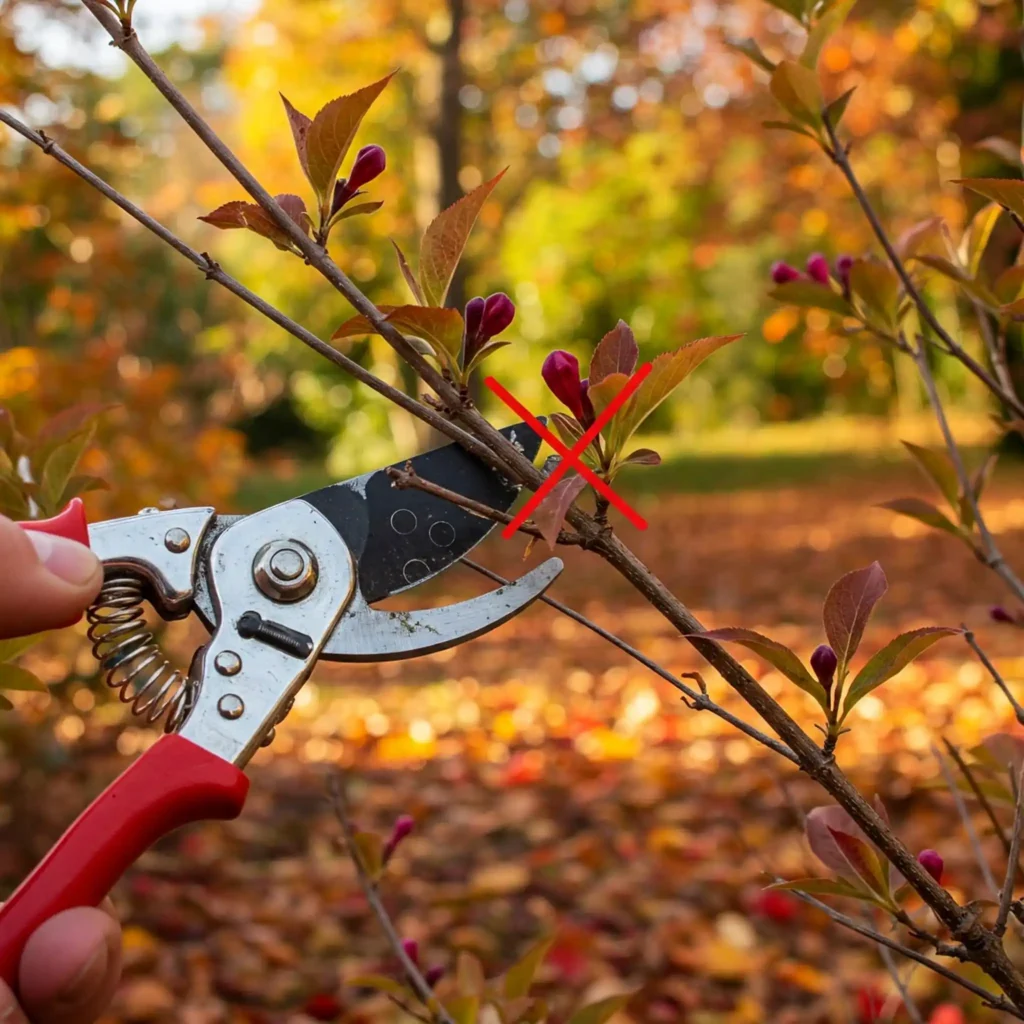
The result: You won’t be able to enjoy the bloom show this season. It’s like to calling off a performance just before it starts!
The Golden Rule: When to Prune Weigela to Get the Most Flowers
When is the best period, then, if fall, winter, and early spring are over? It is, fortunately, fairly simple.
After-Bloom Perfection: Cut Right After Blooming
The optimal time to prune your Weigela for the most flowers the following year is immediately following the conclusion of its main spring/early summer flowering period. This is known as the “magic window” or “golden rule.”
This will be sometime in the early to mid-summer for the majority of Weigelas. This could occur in late May, early June, or even early July, depending on your climate and the Weigela cultivar you’re planting. Keep an eye on your plant; you’ll know it’s time when the final blooming flush has faded and fallen.

The reason why this time is so ideal: The plant has finished its current year’s flowering cycle by the time it is pruned. Since the buds have already flowered, you won’t be pulling any for the current season. It’s important to note that pruning now allows the Weigela to continue growing for the rest of the summer and early fall. It will then mature and produce the flower buds for the upcoming year on this new growth.
What Sort of Pruning Is Appropriate at This Point?
After flowering is complete, you can proceed with the majority of trimming techniques:
- Plant shaping: To enhance the plant’s overall shape and attractiveness, you can trim branches judiciously.
- Managing size: Now is the moment to lower its height or spread if it’s becoming too large for its area.
- Any shrub should have any dead, damaged, or crossed branches removed as this promotes plant health.
- Thinning out older canes: You can execute renewal pruning on older, more crowded Weigelas by cutting some of the thickest, oldest canes all the way down to the ground. As a result, the base will produce more floriferous new growth that is strong and fresh.
If you need to make more drastic pruning cuts, now is the time to do it without having to sacrifice the primary bloom flush for the following year.
The Repercussions: The Appearance of Your Weigela After Improper Pruning
The symptoms of improper Weigela pruning are typically rather obvious, however they might be perplexing if you’re not familiar with the “old wood” concept.
The Leafy Disappointment: A Healthy Plant Without Any Celebration
The most frequent result of improper pruning is that your Weigela will probably appear to be in excellent health. It will appear vigorous overall, put on new green growth, and leaf out attractively. However, when bloom time comes, it will either produce very few blooms or none at all.
Gardeners may find this especially perplexing because the plant appears to be healthy. If the plant is otherwise healthy but without flowers, improper trimming is the main culprit. You may check for pests or diseases, worry about fertilizer, or wonder about the sunshine.
Sigh of the Gardener and Wasted Energy
From the plant’s point of view, it has invested energy in developing branches and flower buds, only to have them severed before they can realize their flowering potential. Anticipation becomes a sigh of exasperation and lost beauty for the gardener.
“I Think I Messed Up!” How to Help Your Weigela Get Over a Poor Pruning Experience
It can be discouraging to discover that you lost flowers due to a trimming blunder. But don’t give up! Even seasoned gardeners experience it. Fortunately, your Weigela can typically bounce back.
First, keep your cool and put down your pruners!
Acknowledging the error is the first step. Even the finest of us experience it! Don’t be hard on yourself for it. Most importantly, if it’s still the incorrect time of year, avoid the temptation to try to “fix” it with more pruning.
The Recovery Plan: It’s Important to Be Patient
Here are some tips for reviving your Weigela’s blooming:
- Step 1: Stop the incorrect pruning. Don’t prune it again in the early spring in the hopes of promoting blooming if you know you pruned it in the autumn or winter. You will only exacerbate it.
- Step 2: Generally, skip a pruning cycle. Any major pruning should normally be avoided for the next full year. This is the single exception; branches that are obviously dead, broken, or exhibiting disease symptoms can be carefully removed at any time without affecting subsequent blooms.
- Step 3: Allow it to develop. Don’t interfere with your Weigela’s spring and summer growth cycle. It will then have the opportunity to grow new branches and, most importantly, set flower buds on that growth for the next year.
- Step 4: Get back to proper pruning. You should only start pruning again if your Weigela (ideally!) rewards your patience with flowers the next season. And don’t forget to trim it as soon as the blooms stop appearing.
Controlling Expectations for the Upcoming Season
It’s critical to maintain reasonable expectations during the healing process. Flowering may be a little scarce in the first recovery year, or it may recover very well, depending on the extent of the improper pruning and the general health of your plant. For the plant to fully recover and reach its magnificent, full blooming potential, it may occasionally take a whole season, or even two. Here, patience is your best ally.
In conclusion, honing wisdom to create a stunning weigela
One basic piece of information can frequently help unravel the enigma of the flowerless Weigela: the most important factor in guaranteeing a shrub with many of blooms is when to prune.
Never forget that Weigelas blossom on ancient wood, just like many other springtime beauties. This indicates that the year before to their opening, those flower buds are produced. Pruning after flowering, rather than before, is therefore the golden guideline! You can steer clear of the typical mistake of unintentionally destroying your Weigela’s future beauty by comprehending and honoring this essential part of its life cycle.
You can now confidently approach your Weigela with pruners in hand at the appropriate time, knowing the “why” behind this important pruning guideline. Bid farewell to springtime without flowers and prepare to be enchanted by the magnificent floral show that your Weigela is supposed to provide. Happy pruning (at the right time)!
FAQ Section
Q1: What if, in the fall, I just gave my Weigela a little clip at the tips? Will it fail to bloom?
A: Flower buds can be removed by even minor fall cutting. Along the stems, including in the direction of the tips, flower buds develop. Therefore, depending on how much was removed and where the buds were focused, even a slight “haircut” done at the wrong time can cause less flowering or regions without any blooms.
Q2: Can I prune Weigelas in the fall or winter if they bloom on fresh wood?
A: Old wood is where most traditional Weigela kinds bloom. Marketed as “reblooming” or “continuous blooming,” some relatively recent cultivars may yield some flowers on new growth later in the season. But buds set on older wood still usually produce their main, most spectacular springtime flower flush. Pruning after the primary spring bloom is always the safest course of action for most Weigelas, resulting in persistent, beautiful spring displays.
Q3: In order to prune my Weigela, how can I determine when it has stopped flowering? Some flowers seem to linger longer than others.
A fantastic observational question! Keep an eye out for when the main, strong bloom flush is over. The majority of the blooms will have begun to fade, turn brown, and possibly fall off the plant. A few straggler blooms may still be present sometimes, but you should start trimming as soon as, say, 80–90% of the floral display is obviously finished. Pruning a week or two “late”—that is, long after the peak flowering—is usually preferable to pruning even a day “early”—that is, before the flowering is really finished, or much later in the season, like October.


